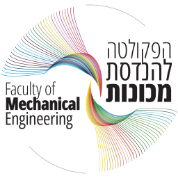This thesis presents an experimental investigation into the dynamics of buoyancy-driven acrylic spheres rising at terminal velocity in a quiescent fluid, with a focus on the vertical oscillation regime. While previous studies have attributed this regime to vortex shedding behavior, the precise mechanisms that govern the sphere’s motion remain insufficiently resolved. To address this, we combine high-speed tomographic particle tracking velocimetry with a fully refractive index-matched system, using acrylic spheres immersed in a sodium iodide solution, to enable undistorted, time-resolved measurement of the surrounding three-dimensional flow field. A major challenge in this configuration is that the spheres are rendered nearly invisible to the imaging system. To overcome this, we developed a physics-informed detection algorithm that utilizes flow field features and particle distribution discontinuities to robustly identify the sphere’s position and reconstruct its trajectory. The Shake-The-Box algorithm was employed to track fluorescent particles with high spatial and temporal resolution, enabling the accurate reconstruction of the velocity and acceleration fields surrounding the sphere. These measurements were then used to compute the pressure field and quantify the instantaneous drag, lift, and torque acting on the sphere. Experiments were conducted for spheres with a density ratio of approximately 0.7 and Reynolds numbers ranging from 1550 to 4700, targeting the vertical path regime identified in previous classifications. The results provide detailed insight into the dynamic coupling between the sphere’s motion and the evolving wake, including correlations between vortex detachment events and changes in the forces and torques experienced by the sphere. While the study does not propose a definitive theoretical model, it provides a high-fidelity experimental foundation for future modeling of buoyancy-driven multiphase flows and fluid–structure interactions.

Investigating the flow field around rising spheres at terminal velocity and their dynamics
Are you interested in learning the profession of the future?
Faculty of Mechanical Engineering, Technion - Israel Institute of Technology, Haifa
"*" indicates required fields





